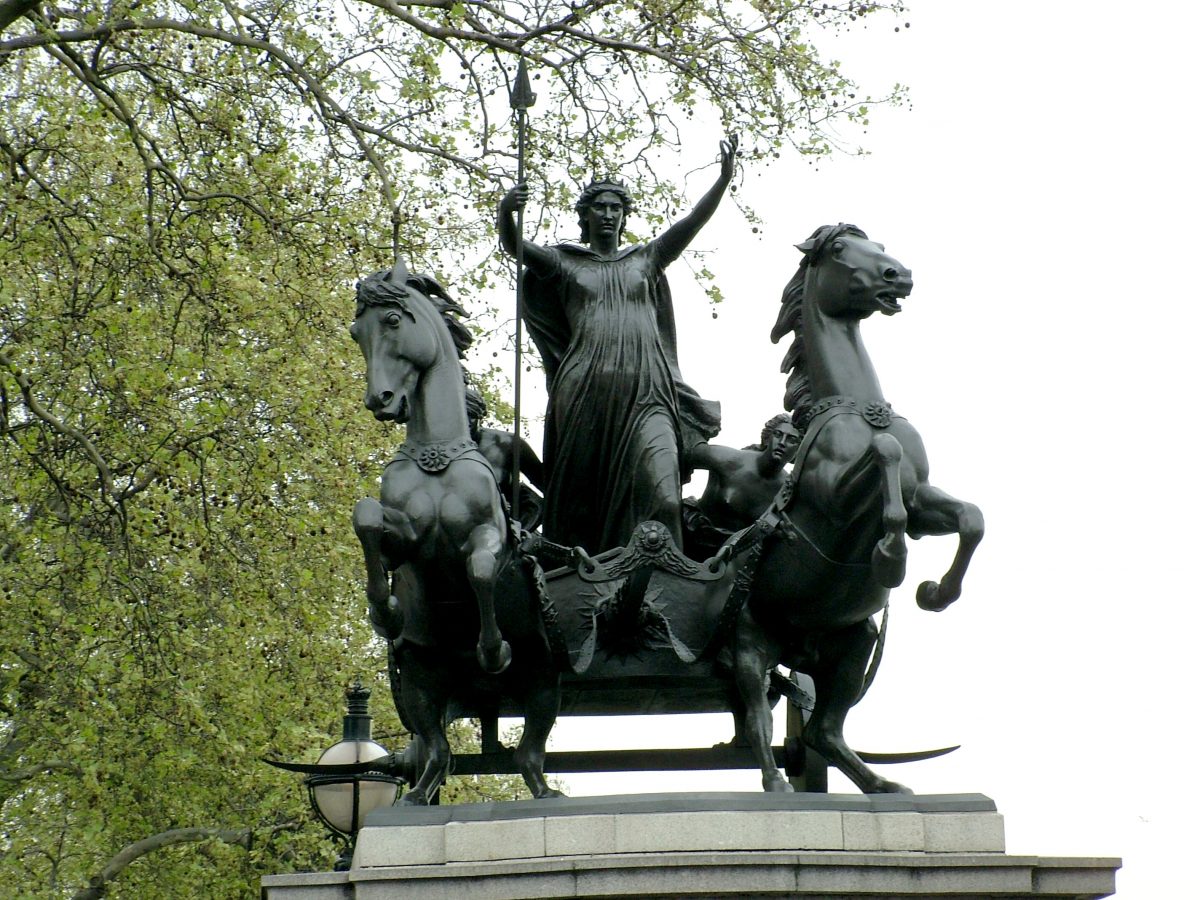Boudica/Boadicea – died c. AD 60/61
History has no record of the name she was born with – Boudicca, meaning ‘Victory’ is the name given to her when she fought the Romans. What we know of her is only from three Roman historical sources, two by historian Tacitus and the third by another historian, Dio Cassius. There are no written records from the Celts to either confirm or deny any of it.
This much we know: Queen of the Iceni, Boudica is described as tall and fearsome with masses of red hair and led a massive rebellion against the Romans, who referred to her as ‘The Killer Queen’.
She was married to Prasutagus and together they ruled the Iceni of East Anglia.
As they invaded and conquered the south of Britain, the Romans allowed the Iceni to continue. Prasutagus, hoping to keep the Romans onside and sweet, made Emperor Nero co-heir of this lands, together with his daughters. It proved to be a very short-term fix.
After Prasutagus died, the Romans decided they’d be in charge and that their laws prohibited his inheritance to pass down to his daughters. They plundered and confiscated the land, cattle and riches of the Iceni. After flogging Boudicca, they proceeded to flog and rape her daughters, who were not yet thirteen, in front of her. This act of public brutality would have been viewed as sacrilege; the Romans wanted to desecrate any air of divine mystique around them as women and Celtic royals.
His “kingdom was plundered by centurions, his house by slaves, as if they were the spoils of war. First, his wife Boudicea was scourged (flogged), and his daughters outraged. All the chief men of the Iceni, as if Rome had received the whole country as a gift, were stripped of their ancestral possessions, and the king’s relatives were made slaves…” wrote Roman historian Tacitus.
Around AD 60 or 61, the Iceni decided they’d had enough of being treated as slaves. Joined by other tribes, including the Trinovantes, who were equally furious and disgruntled, and under Boudicca’s leadership, they rebelled in their tens of thousands. Boudicca’s daughters would be by her side every step of the way; her soldiers smashed the Roman Ninth Legion and captured Camulodunum, then capital of Roman Britain (now Colchester), destroying a Roman temple.
“The whole island [of Britain] now rose up under the leadership of Boudicca, a queen, for Britons make no distinction of sex in their appointment of commanders’, wrote Tacitus.
Not half way done yet, they moved on to Londinium (London), where Tacitus says 70,000 were slaughtered and Verulamium, (St. Albans in Hertfordshire), destroying, burning and desecrating Roman cemeteries.
Roman historian Dio Cassius wrote that Boudicca was ‘possessed of greater intelligence than is usually found in the female sex.’
She was finally defeated by Roman governor Gaius Suetonius Paullinus with his army of 10,000 from the 14th Legion at a battle thought to have taken place at Mancetter, near Nuneaton, in AD61. Boudicca and her daughters rallied their Briton troops from their chariot and exhorted them to fight against their slavery.
“In stature she was very tall, in appearance most terrifying, in the glance of her eye most fierce, and her voice was harsh; a great mass of the tawniest hair fell to her hips; around her neck was a large golden necklace; and she wore a tunic of divers colours over which a thick mantle was fastened with a brooch. This was her invariable attire …” wrote Dio, who added that she clutched a spear when she spoke to her people.
What happened next was bloody in the extreme. Outnumbered and out manoeuvred, the rebels were slaughtered in minutes. Tacitus reports that 80,000 Britons (men, women and children) were massacred. The Romans lost 400 men.
It is thought that rather than be captured, Boudicca and her daughters poisoned themselves.
“Two cities were sacked, eighty thousand of the Romans and of their allies perished, and the island was lost to Rome. Moreover, all this ruin was brought upon the Romans by a woman, a fact which in itself caused them the greatest shame,” wrote Dio.
In 1902, Boudicca had her own bronze statue erected next to London’s Westminster Bridge; depicted by artist Thomas Thorneycroft forever riding in her chariot, she remains a symbol of female strength and power and the fight for freedom

